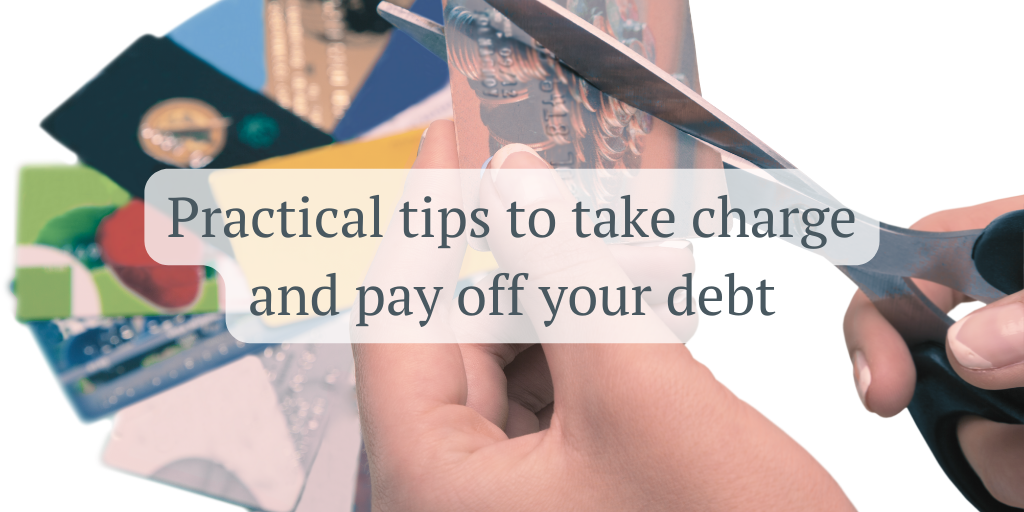
Introduction
Managing debt can be daunting, but with a solid plan you can conquer it. Whether you’re dealing with credit cards, loans, or any other form of debt, the key is to take it step-by-step and stay motivated.
Imagine the freedom you’ll feel once you have a handle on your debt and can focus on your dreams without the weight of debt hanging over you. Let’s break it down into practical steps so you can move from stress to success.
Take inventory of your debt
First things first, let’s figure out exactly what we’re dealing with. Grab a notebook or open a spreadsheet and list all your debts. For each one, note down:
- How much do you owe?
- What’s the current interest rate?
- What’s the minimum monthly payment?
Tip: Ever tried negotiating a lower interest rate? It’s worth a shot! Many lenders are open to discussion, and there are interest-free balance transfer offers out there. A quick call could save you money.
Need a reality check on how much those credit card purchases cost after interest? Try this handy calculator: Credit Card Calculator
Change your mindset about spending
If you’re serious about becoming debt-free you have to either increase your income or reduce your spending. You have to save money in order to have more to pay off past financial liabilities. The more you spend on meaningless and unnecessary things, aka “wants”, the bigger hole you dig yourself into.
Prepare a spending plan or budget and see where you can make cuts. Work out how much income will cover your essential expenses and buy only what you need, not what you want, until your debt has been repaid.
More than just numbers
Debt isn’t just about dollars and cents; it has a real emotional impact. Some debts might be more stressful than others. If a particular debt is keeping you up at night, prioritise paying that off first. It’ll help you regain a sense of control and reduce anxiety.
Set aside specific times to think about your debt: when you’re making your repayment plan and your budget or when you’re actively paying your debts. Outside of those moments, try not to dwell on it. If that feels hard, practice being present and grateful for what you have. Remember, there’s so much more to your life than just your debt and finances.
Choose your repayment strategy
There are two popular methods: the snowball and the avalanche. Here’s how they work:
The snowball method: Start with your smallest debt. Pay as much as you can towards it while making minimum payments on the others. Once it’s paid off, move to the next smallest. The quick wins can keep you motivated.
The avalanche method: Tackle the debt with the highest interest rate first. This might take longer, but you’ll save more on interest in the long run. Once it’s paid off, move to the next highest rate.
Pick the method that feels right for you. Do you need the emotional boost of quick wins (snowball), or do you want to save as much as possible on interest (avalanche)? There’s no wrong answer, and you can even mix and match based on your needs.
Whichever method you choose, stop using your credit card(s) and avoid taking on any new debt. In fact, I suggest you put your credit cards in the freezer. 😉
Supercharge your debt repayment
Create a Debt-Crushing-Fund (DCF). This is a monthly stash of money specifically for paying off your debt. Here’s how to build it:
- Save from expenses: If your gas bill drops, save the difference for your DCF.
- Make small sacrifices: Skip that daily coffee and add the savings to your DCF.
Add your DCF to your minimum monthly payments. For example, if your DCF is $40 and the minimum payment is $60, pay $100.
When you pay off one debt, take the payment amount and add it to your DCF for the next debt. Keep the momentum going!
Stick with it and stay positive
Remember, it’s okay to start small. Focus on your steady progress rather than the entire mountain of debt. Celebrate your wins along the way! Check out my blog post, 7 pitfalls to avoid when paying down debt.
Don’t get caught again
Finally, as you go through this process it’s important to examine how and why you ended up with the debt in the first place. If it was due to things like medical expenses or unexpected job loss you can accept it and realise that you did what you had to do.
But if it’s retail spending on things you don’t really need, it’s important to acknowledge that and address the root causes.
Getting out of debt is all about making lasting changes to how you handle money. It means sticking to spending only what you currently have, not what you expect to get on payday or when that new client finally pays up. Just focus on what’s actually in your bank account right now.
I know it sounds hard at first since we’re so used to relying on future income, but it’s totally doable with some practice. And the best part? As you start paying off your debts, you’ll notice it gets even easier. With less money going toward debt payments, you’ll have more cash available for other things, making the whole process a lot smoother.
And if you’re feeling stuck and are looking for help, don’t worry! We can tackle this together in my Debt Buster Session.

